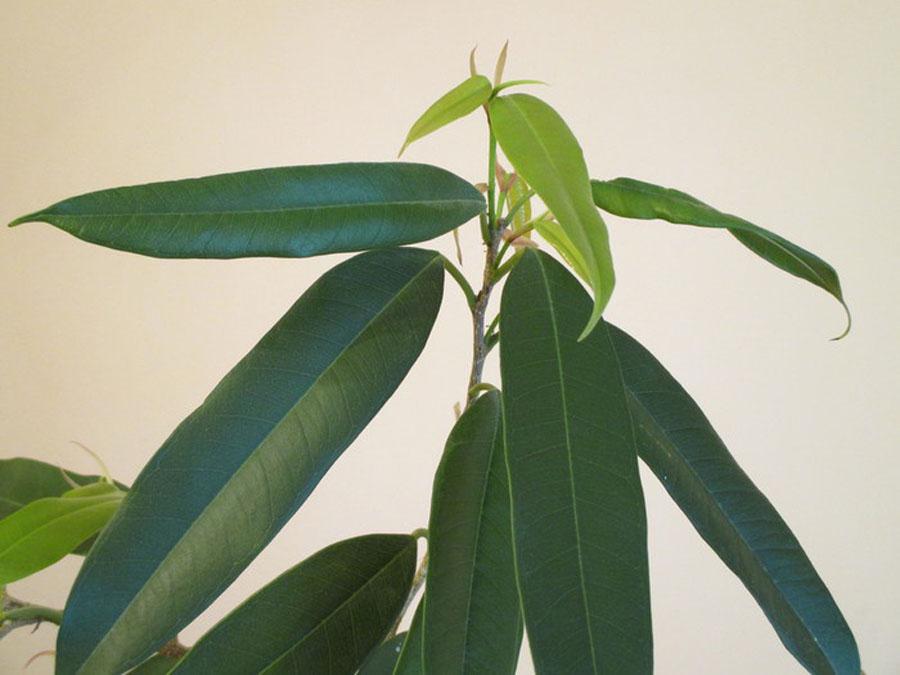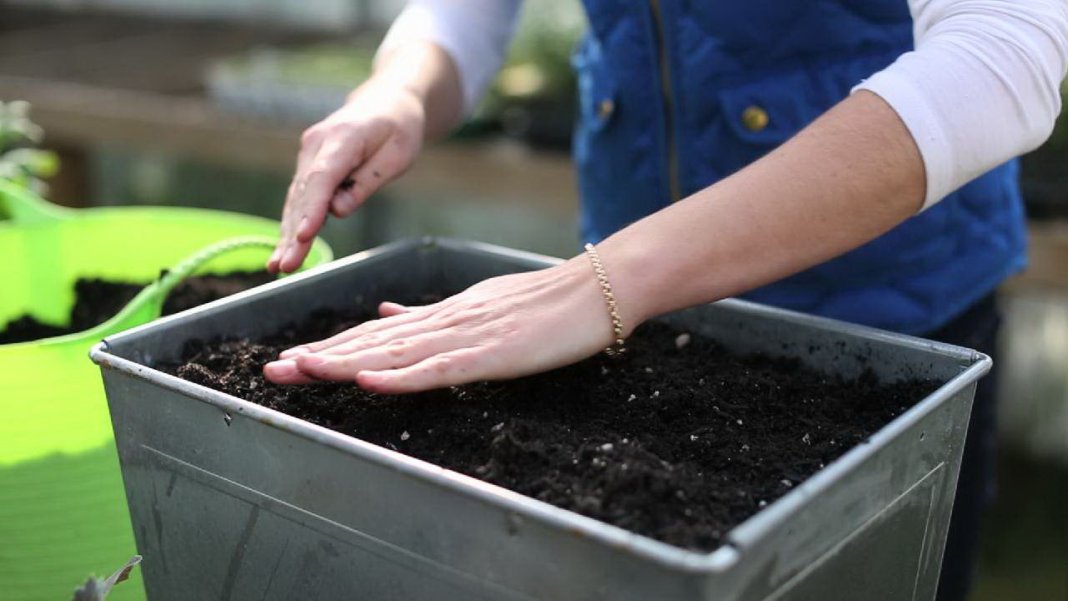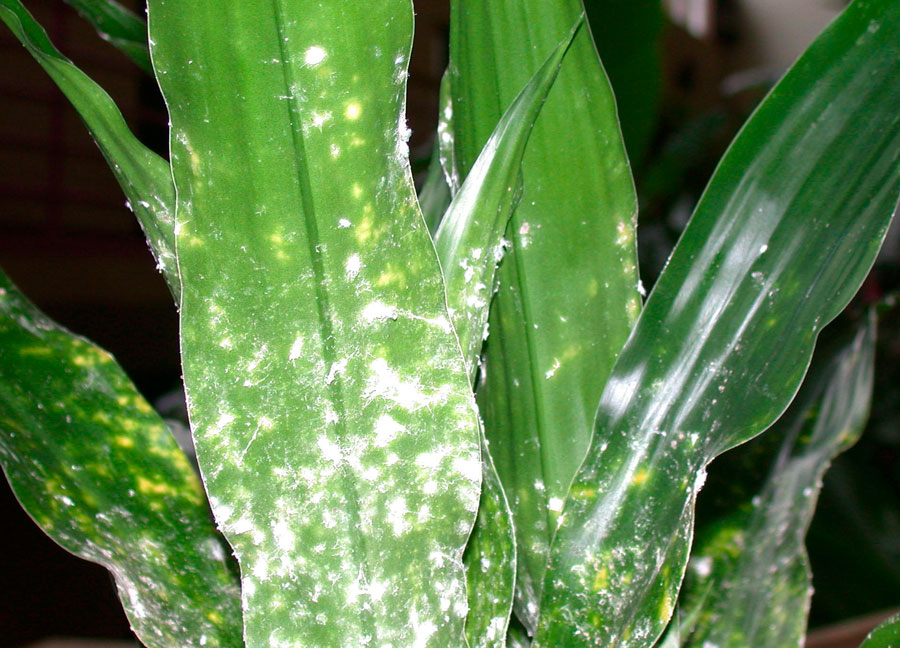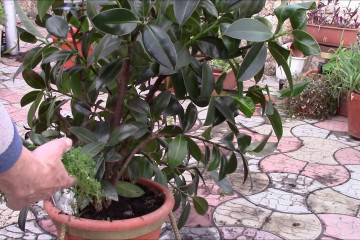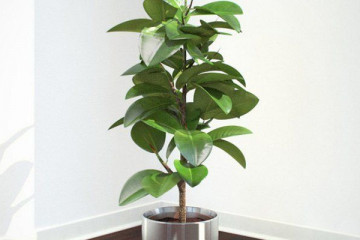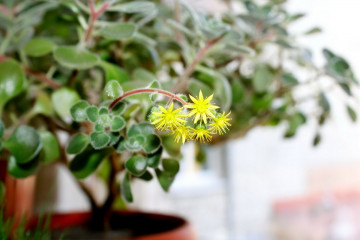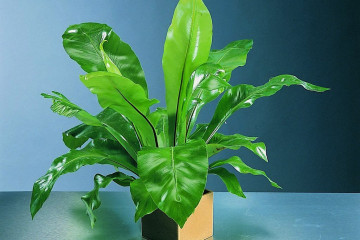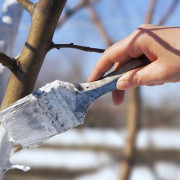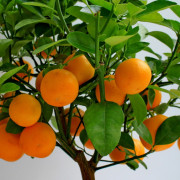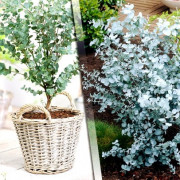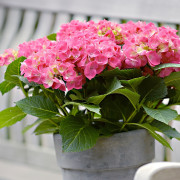Ficus Ali flower - home care
Content:
When choosing a large ornamental plant for home or office, ficuses are often preferred. One of the representatives of the species - ficus Ali - has gained wide popularity as a beautiful and undemanding tree.
What does the ficus Ali look like, which family it belongs to
Belongs to the Mulberry family. When compared with other types of ficuses, this variety differs in external characteristics. The plant is a tree. The lower part of its trunk is bare, and the upper part is covered with branches with densely arranged leaves on them. In nature, the ficus binnedika Ali can reach a height of 15 m or more, but at home it usually does not exceed 1.5-2 m.
The main difference of the species is the elongated leaves, which resemble willow in shape. This was the reason why the ficus Ali got the popular name willow ficus. Flexible drooping branches enhance the similarity.
Common varieties
Ficus binedika Ali (like other varieties) has several varieties. The differences are in the shape and color of the leaf plates. Among the varieties for home breeding are:
- Amstel Gold. Will decorate any interior. Narrow long leaves are colored light yellow. Bright green spots are scattered on the surface of the plates in a chaotic manner.
- Amstel King. A distinctive feature of Amstel King can be called a large sheet plate with a smooth waxy surface. The width of the sheet reaches 6-7 cm.
- Amstel Queen. This variety is visually similar to the previous one (Amstel King). It has the same thick dark green crown. In this case, the width of the leaves is slightly larger.
Healing properties
Narrow-leaved ficus is famous not only for its decorative, but also for its medicinal properties. The leaves of the plant are used to prepare alcoholic tinctures and infusions. These funds help to get rid of cancer, hematomas, joint diseases and pathologies in the field of gynecology. Traditional healers advise freezing the leaves and using them to treat hemorrhoids.
Briefly about the history of appearance
According to the official version, the birthplace of the tree is the Hawaiian Islands, but the growing area has spread over large areas. In the wild, these species are found from the Himalayas and Nepal to Vietnam and the Philippines.
The first descriptions of long-leaved ficus were made in the 19th century. Their author is Simon Binnendijke (or Bennedikt), who served as a gardener in the Netherlands. This fact became the reason that the described species of ficus was called binnendiyka, or an abbreviated version - Ali.
Features of caring for a flower at home
The natural habitat of this plant is hot countries. This fact explains the thermophilicity of the tree. In order for the ficus to actively grow in an office or apartment and delight with an abundance of greenery, it needs to provide conditions that would be as close to natural as possible.
Temperature
Ficus Benedict feels best when the air temperature is 22-24 ℃ above zero. In winter, it is better not to keep the flower pot on the windowsill. Roots may suffer from freezing of the soil. This leads to diseases, as a result of which the ficus sheds its leaves.
Wood also needs to be protected from heaters and radiators. Hot streams from appliances dry the air, causing overheating.
Lighting
The level of required lighting for different varieties of ficus differs:
- If the leaves of the tree are painted in dark green shades, then there are no increased requirements for light. Moreover, the flower can live at a short distance from the window or in partial shade. Such features of the content will reduce the growth rate, but otherwise there will be no problems.
- If the ficus has spotted light leaves, then it is important to provide good lighting to preserve its beauty. The pot can be placed near the southeast or south window.
Watering
The frequency of watering and the required amount of water depends on the season and the size of the ficus of Binnendiyka Ali itself. Experienced growers are advised to check the condition of the topsoil. If it's dry, it's time to water.
Spraying
Dust constantly accumulates on smooth, wide leaves. In order to get rid of contamination, the plant should be periodically sprayed. During the summer, this procedure can be repeated twice a day. You can use cool water. In the absence of heat, spraying is performed less often - about 2 times a week.
Humidity
Such a characteristic as air humidity has little effect on the growth activity of a flower. It is enough to maintain a favorable microclimate of a room with a humidity of about 50-70%.
Priming
For growing ficus benedict Ali, ready-made soils for palms or ficuses are well suited. However, you can make a plant-friendly soil yourself. So, for young plants, mix an equal amount of peat, turf and sand. Acidic and alkaline soils are not suitable for ficuses.
Top dressing
The period of active growth of this variety occurs in the summer (from March to October). During these months, feeding is carried out every 10-12 days. As fertilizers, organic compounds and mineral complexes are required. The most effective way is to alternate these funds.
Features of care in winter, dormant period
In ficus Ali, home care in the winter is somewhat different. From the end of October, the ficus begins a dormant period. At this time, you need to take care of the flower in a slightly different way:
- Water less often. In winter, it is better to dry the ground a little than to pour it over.
- Spraying is carried out 1-2 times a week.
- It is strongly discouraged to feed the tree.
When and how it blooms
In the wild, some varieties bloom, but their flowers and branches have an unusual shape. They resemble small growths on tree trunks. Household ficuses do not form flowers.
Pruning
Pruning is essential to form a beautiful crown and control the height of the tree. The best time for this is late March or early April. During this period, long branches or branches growing inside the crown are removed. This should be done with sharp instruments.
How ficus Ali reproduces
There are 2 ways to reproduce willow ficus:
- planting by cuttings is the most common method;
- sprouting a tree from seeds is not popular.
Germinating seeds
In specialized stores, you can buy ficus seeds, but such a product is not in high demand among flower growers. This is explained by the relatively low germination rate and high time costs.
Rooting cuttings
The easiest and fastest way to propagate Bennedik Ali's ficus is by cuttings. To do this, at the beginning of spring, branches are cut from the tree, 15-20 cm in size. You can use the branches left over from cutting the crown. To germinate cuttings you need:
- Take water at room temperature into a container (for example, a glass) and place the cuttings in it.
- The twigs should stand in a warm room for 3-4 weeks. If necessary, add water to the glass.
- When the cuttings have roots, about 2-3 cm long, the plants can be planted in the ground.
Transfer
A flower transplant is carried out in the following way:
- The ficus is carefully removed from the old pot. In order not to damage the roots, before this, they slightly moisten an earthen lump.
- The roots are examined and if rot or damage is detected, these parts are removed.
- A plant is placed in a larger pot, the right amount of soil is added and lightly tamped.
Possible growing problems and diseases
Several reasons can worsen the condition of the plant:
- improper care;
- diseases (fungal);
- pests.
Drops buds and leaves
If plants begin to shed their leaves, then there may be several reasons for this:
- Sudden temperature changes (hypothermia).
- Excess moisture. To improve the condition of the flower, it is important to monitor the level of soil moisture.
Leaves turn pale
Pale or yellow leaves may indicate a lack of light.
The tips of the leaves dry
Sometimes flower growers notice that Benjamin Ali's ficus begins to dry and the tips of the leaf plates begin to curl. Excess light is one possible cause.
The lower leaves fall
If the lower leaves began to fall from the tree, while there are no other symptoms of the disease, it can be assumed that the conditions of detention have changed. Such signs are provoked by a rearrangement of the pot, a cold snap or excessive dryness of the air.
Pests
Ficus often suffers from insect pests. Most often these are:
- Shield. A small insect is able to suck juice from the leaves of a plant. The problem is accompanied by yellowing of the crown and falling leaves. The scale looks like dark tubercles.
- Mealy mite. You can recognize this insect by the cotton-like mass on the leaves, which most often has a milky color.
- Aphid.
Other problems
If dark spots or large brown spots appear on the leaves, this is a sign of a fungal disease. You can get rid of the disease with the help of chemicals that are sold in stores.
Signs and superstitions
There is an opinion that ficus binnendeyka helps to get rid of insomnia, so the tree can be safely placed in apartments.
It is recommended to give a pot with such a plant to women who have long dreamed of pregnancy. The present is usually presented by the relatives of the expectant mother.

